


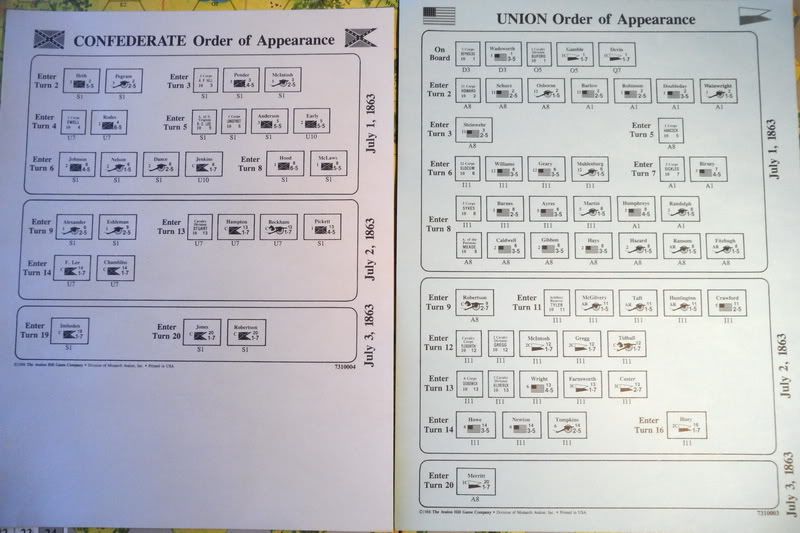
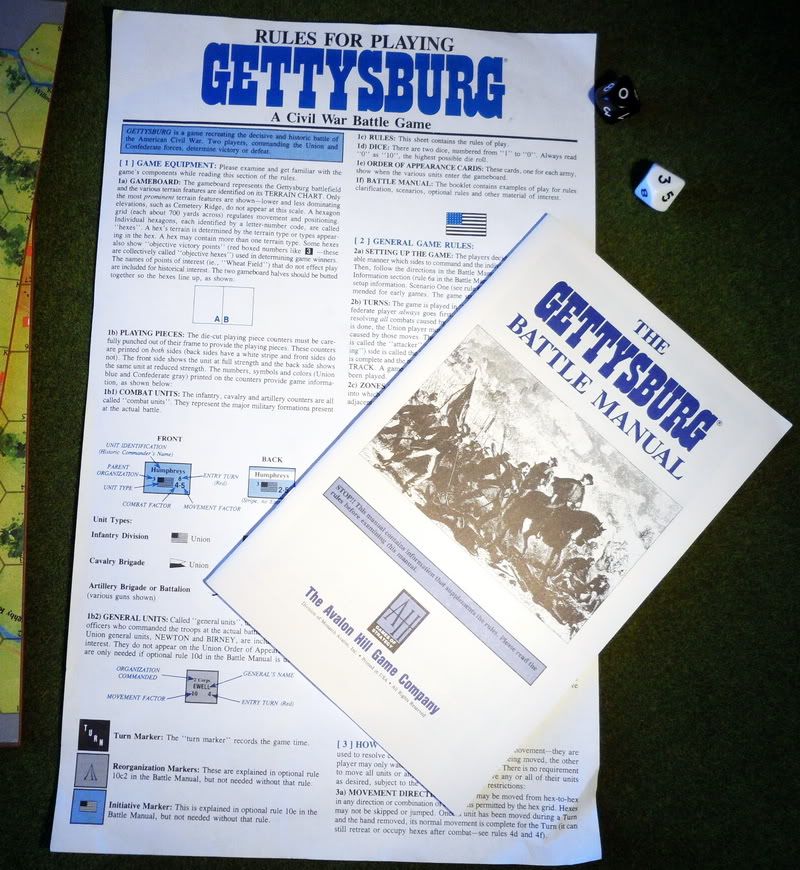
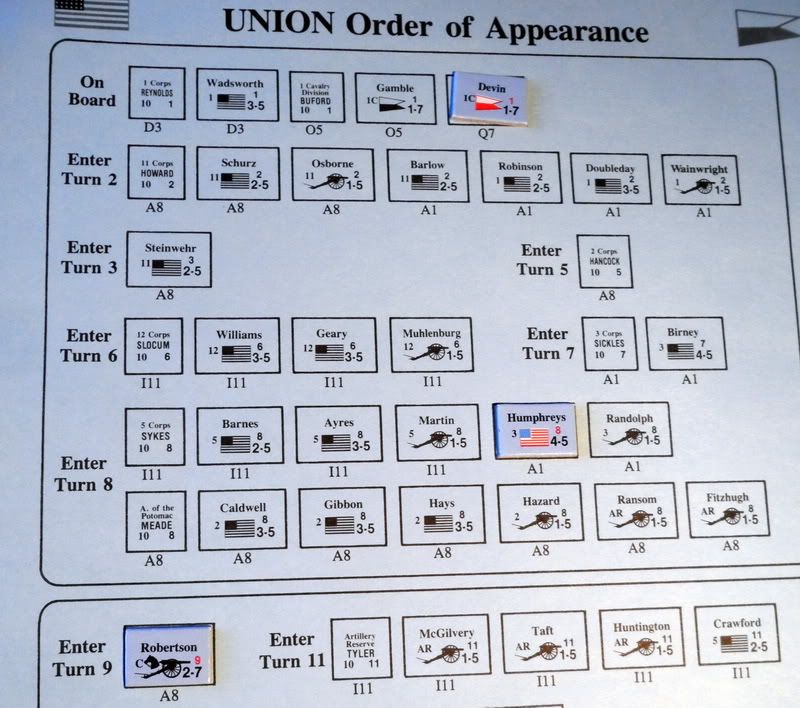
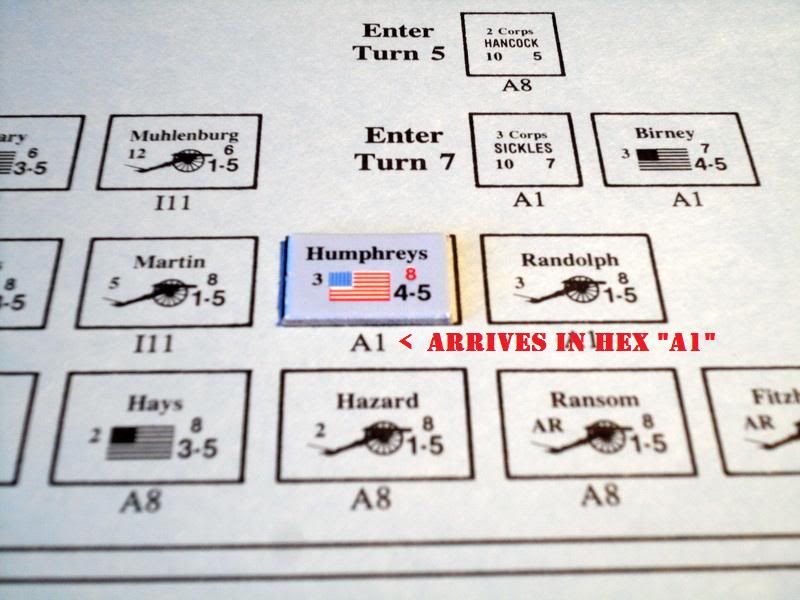
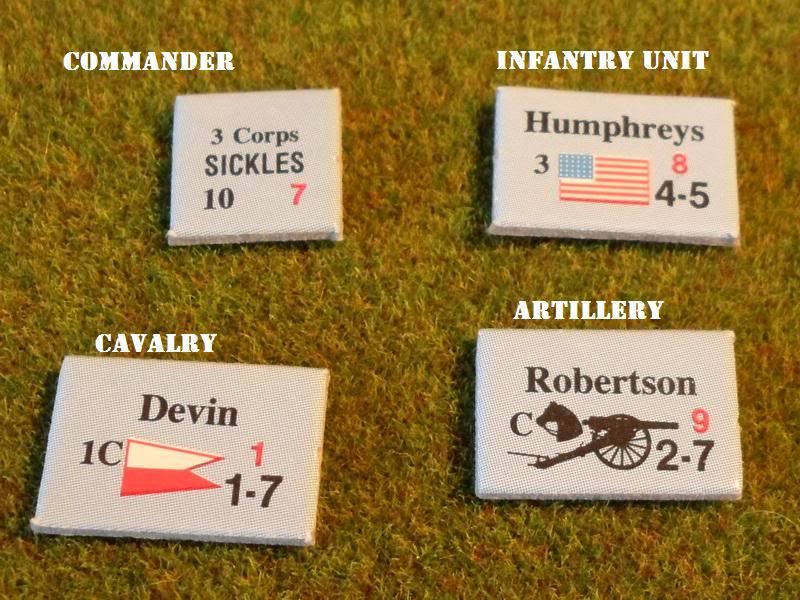
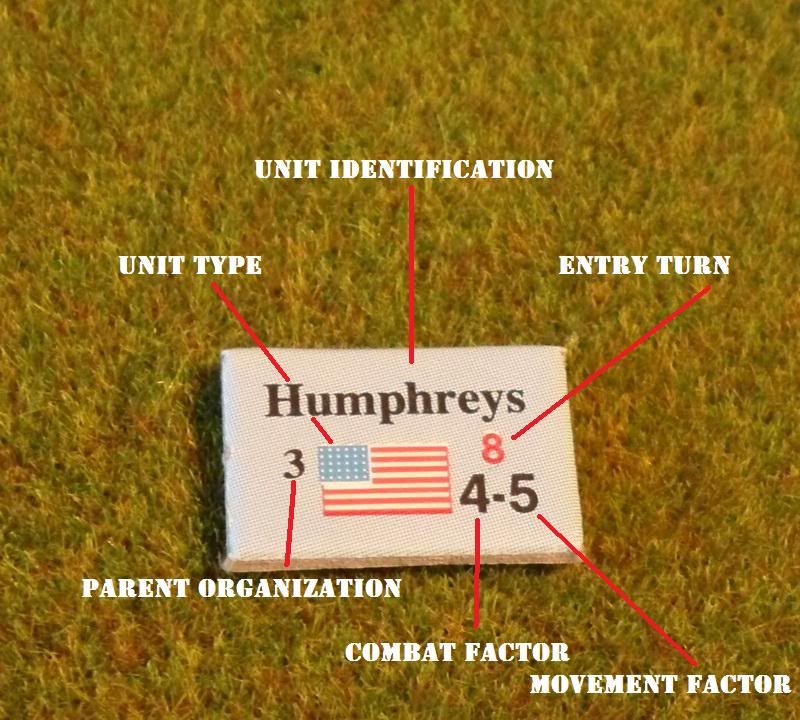

 Like anyone with a great interest in military history I find the wars of North America very interesting. The French & Indian War being pretty much a guerilla warfare fought on foot in the forests along the American colonies and French Canada. The War of Independence had an army of rebels defeating the elite of England. And the American Civil War had brother fighting brother.
Like anyone with a great interest in military history I find the wars of North America very interesting. The French & Indian War being pretty much a guerilla warfare fought on foot in the forests along the American colonies and French Canada. The War of Independence had an army of rebels defeating the elite of England. And the American Civil War had brother fighting brother. Anyone who have seen "Gettysburg" or "Gods and Generals" will probably feel excitement about this period – as a wargamer I would love to replay the historical battles of that war on a miniature level. Though that would be pretty expensive and take a lot of painting to assemble a worthy army. The next best thing is to play a boardgame about it. And the game in today’s review is an old one that I bought used from a friend – the box was a bit worn but the contents were in perfect condition.
“Gettysburg: A civil war battle game” is one of those hex based Avalon Hill games where you have small counters representing various units and commanders. Each counter has the information on unit strength, movement rates, order of appearance and unit type. Usually when it comes to games like this, they tend to be a grand scale campaign level system that can take weeks to play from start to end as they recreate years of events, making you push hundreds of piled counters around making it hard for a newbie to get into – and often scaring away people who like to play a game from start to finish during one sit.
Gettysburg is a great example of a hex based game which works extremely well imo. The game revolves around a single battle, battle of Gettysburg (duh), both armies are written according to historical strengths and will appear in a set order. The narrow timeline of 3 days can be played in full or you can break the game up in missions based around each day – each day have victory conditions for both sides that have to be accomplished before nightfall. As such the game is very user friendly and easy to get into, the playing area is small enough to fit any table and the amount of components won’t make people panic. The game comes with a basic rule sheet, a two sided paper with the core rules and very good explanations on each phase of the game. It also comes with a booklet packed with information on the American Civil War and Battle of Gettysburg in particular, information about the “campaign” and the missions. Some great photos with description of commanders and weapons used during the war.
The game itself is made up of a 2 piece board that is depicting the area around the town of Gettysburg, with all the strategic location that have to be captured in order to seize victory. You get two D10 dice, unit counters for both Union and Confederate sides, 2 sheets of “Orders of Battle” that show you in which order and on what turn the units appear on the battlefield (and from where). And that’s pretty much it. Simple and a clear contrast to many games that I own. Even though I love games with hundreds of components, I do admit that it sometimes is VERY fatiguing to pick up 2 Arkham Horror boxes and sort everything up on the table that just disappears beneath the sheer amount of decks of cards, components and board tiles. No, this game can be set up in a matter of 10 minutes. All you need to do is to sort the units and put them on the Orders of Battle sheet, and the starting units on the board according to the mission you are playing.
The core rules are all on the quick reference sheet – the booklet includes some additional “advanced” rules that make commanders more important, mainly making units unable to move unless grouped with a commander..
How the game plays, very simple. You pick a mission, say “Day 1” it has a description of what to do to score victory points. The player with most victory points at the end of the day (or campaign if you play all 3 days in one go) wins. The game is divided into turns, with a “I go, You go” system, making one side activate all of its units before the opponent.
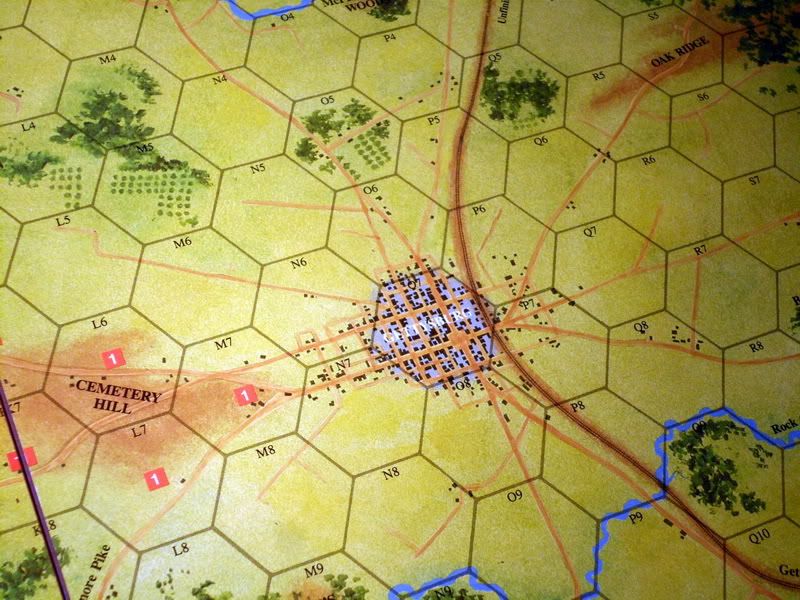 Each unit comes with a movement value, and that is how many hexes that unit may move each turn. Units move along the hexes, getting movement bonus and penalties depending on what terrain they traverse. Hexes that contain specific terrain, such as forests and Gettysburg itself give the defending units +1 to their combat value. Roads give you additional movement, some terrain allow your cannons to fire over friendly units etc.
Each unit comes with a movement value, and that is how many hexes that unit may move each turn. Units move along the hexes, getting movement bonus and penalties depending on what terrain they traverse. Hexes that contain specific terrain, such as forests and Gettysburg itself give the defending units +1 to their combat value. Roads give you additional movement, some terrain allow your cannons to fire over friendly units etc.Combat is fought between units standing in adjacent hexes, attacking units may only pick one target, while the defenders may gang up on the attacker as long as they all have hex-contact with the attacking unit. Combat is based on unit quality, experience, tactics etc – generally the Confederate infantry are very good in this game. But the Confederates are also outnumbered and outgunned. When combat occurs, each player looks at the combat rating of the units
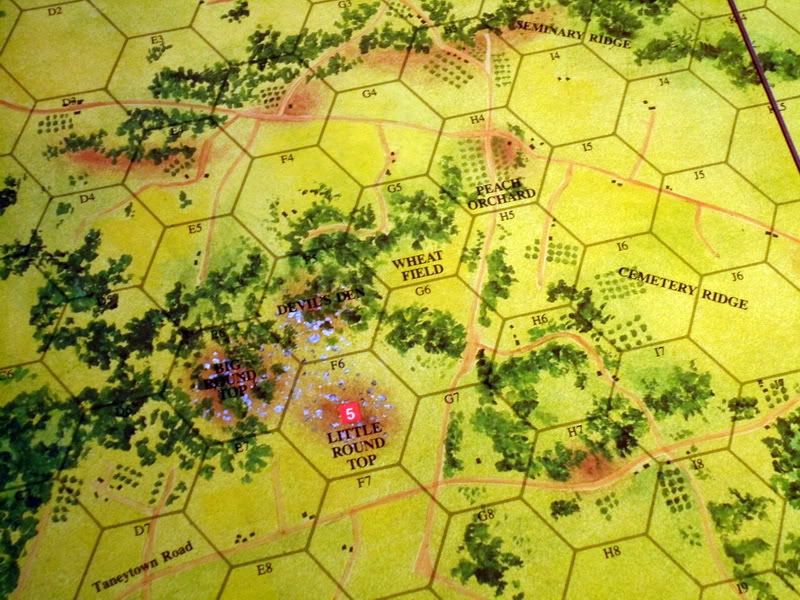 involved and add that number to a D10 roll. The player that rolls the highest wins the combat. To inflict casualties on the enemy you have to win the combat by at least 3-5, if you score 6+ more than the enemy you inflict 2 wounds right away. If you win the combat but fail to inflict wounds, the enemy still has to retreat to an adjacent hex that is not occupied and outside of combat. If both players roll equal
involved and add that number to a D10 roll. The player that rolls the highest wins the combat. To inflict casualties on the enemy you have to win the combat by at least 3-5, if you score 6+ more than the enemy you inflict 2 wounds right away. If you win the combat but fail to inflict wounds, the enemy still has to retreat to an adjacent hex that is not occupied and outside of combat. If both players roll equal 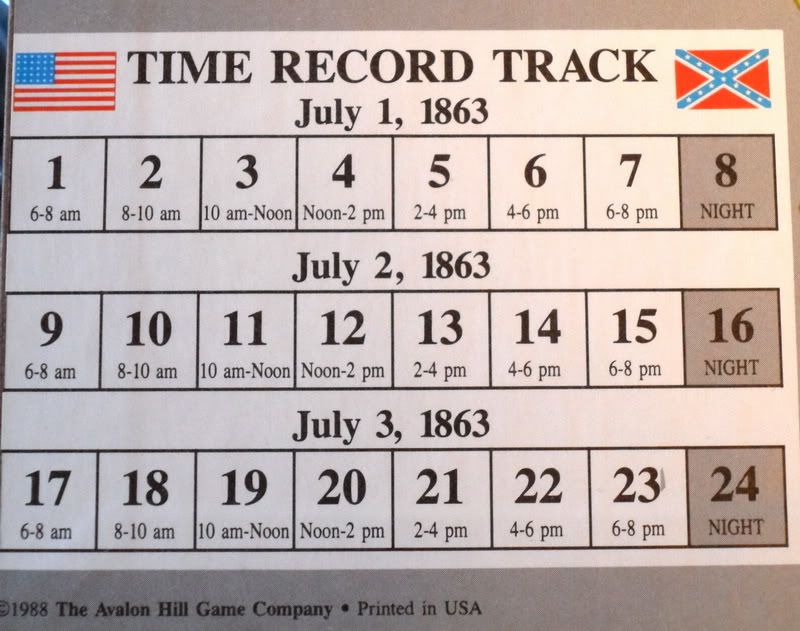
 then the Defender wins automatically. Casualties are easily remembered, as you simply flip the unit counter that has taken damage according to the result. Most units have a front and a back printed. Combat rating is reduced when you take damage, cavalry and artillery are more frail and fewer in number thus they often become eliminated from a single casualty result.
then the Defender wins automatically. Casualties are easily remembered, as you simply flip the unit counter that has taken damage according to the result. Most units have a front and a back printed. Combat rating is reduced when you take damage, cavalry and artillery are more frail and fewer in number thus they often become eliminated from a single casualty result.This may sound simple, but it actually works very well and it still a lot of fun. The game becomes more about tactics and maneuvers. What units to group together, occupy terrain, choose when to advance with what units at the right moment, to attack with the correct units against the correct targets. The Union units often have weaker combat rating, making the Union commander forced to keep them together so that they can gang up on any attacker. The Confederate side is stronger in combat but weaker in numbers, as each turn goes by the odds are stacked against them, to seize victory they must weigh their options and often make hard decisions on whether to wait an extra turn for more troops or to smash into the Union units before they completely outnumber you. The terrain plays a major role and you get quite immersed in the fighting even though the game is very abstract.
At the end of each day there is a “Night” turn. When night falls all fighting seizes and only movement is allowed. Units may however not move into combat range of enemy position during this turn.
Battle of Gettysburg is an easy game to grasp, with both basic and advanced rules. The rules are user friendly but have tactical depth to keep both veteran and newbie boardgamers interested – especially if you have historical interest in the battle itself.
If you like wargames and can find this game, I do recommend getting it.
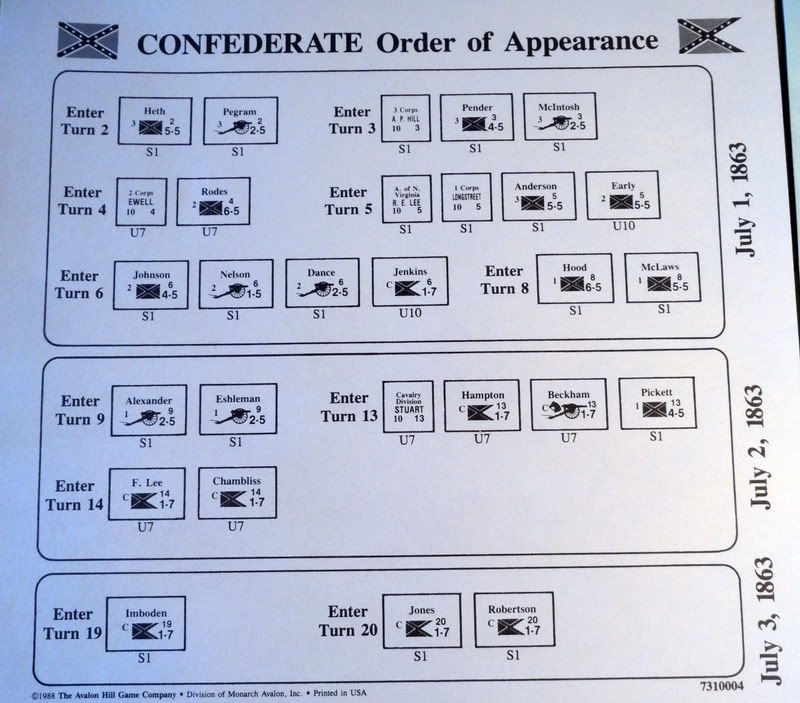
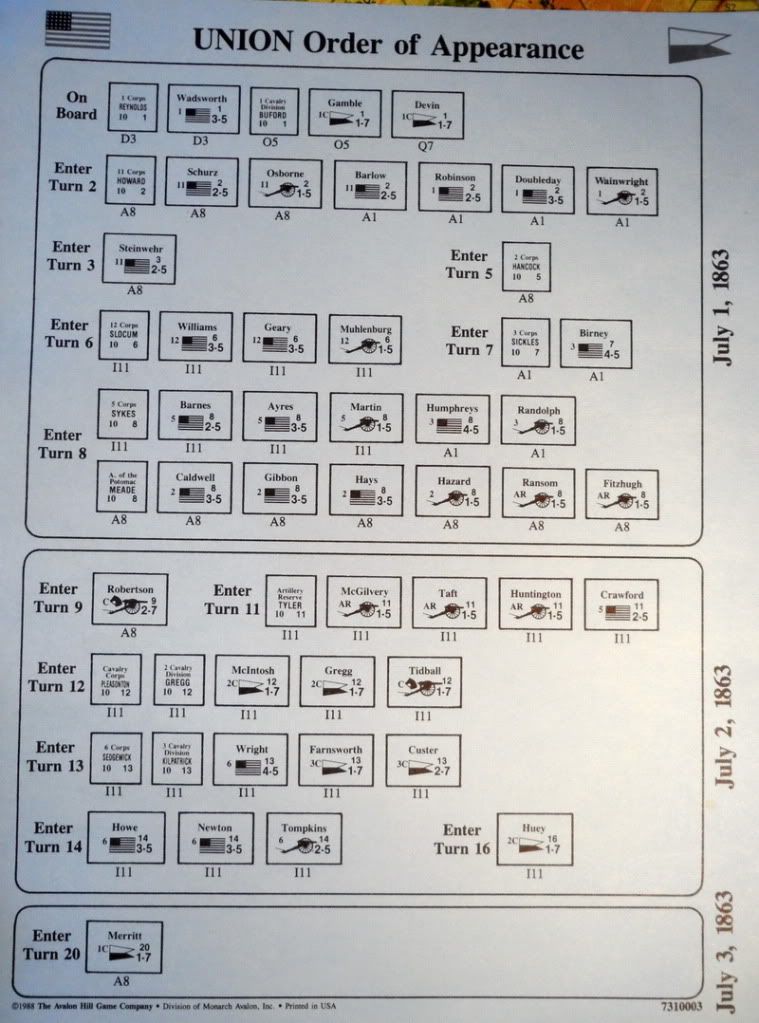
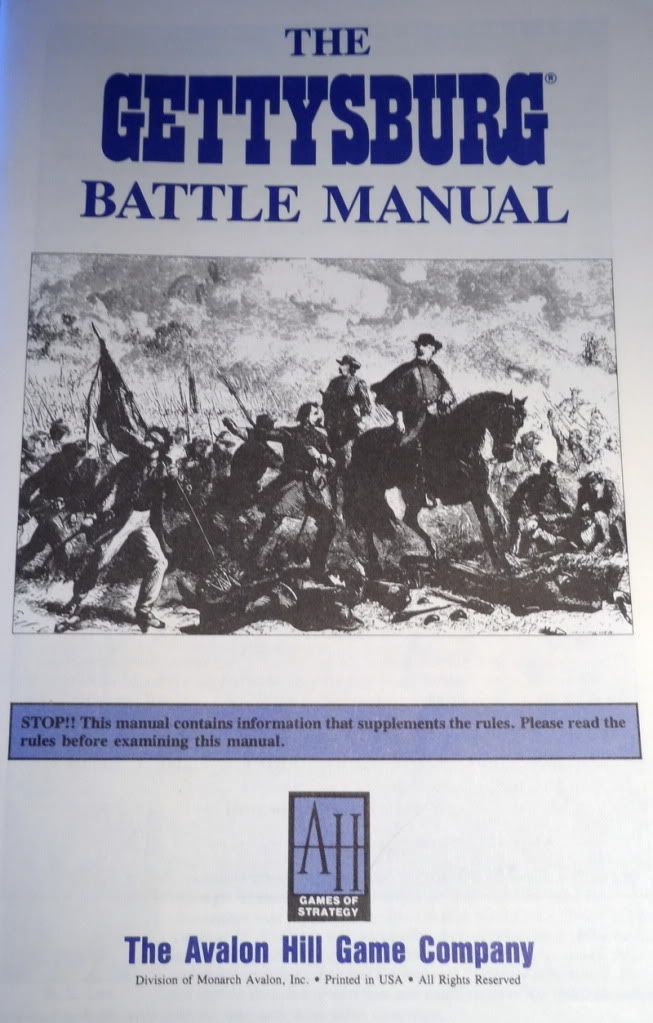
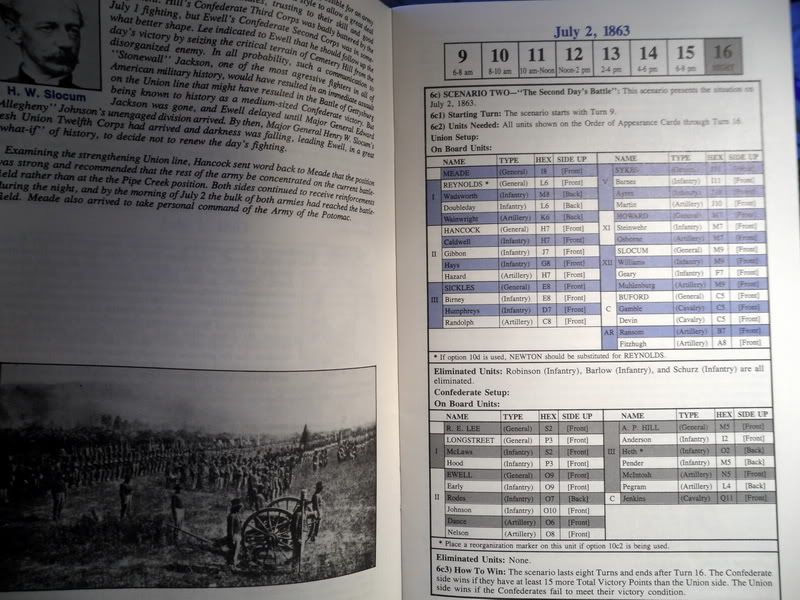


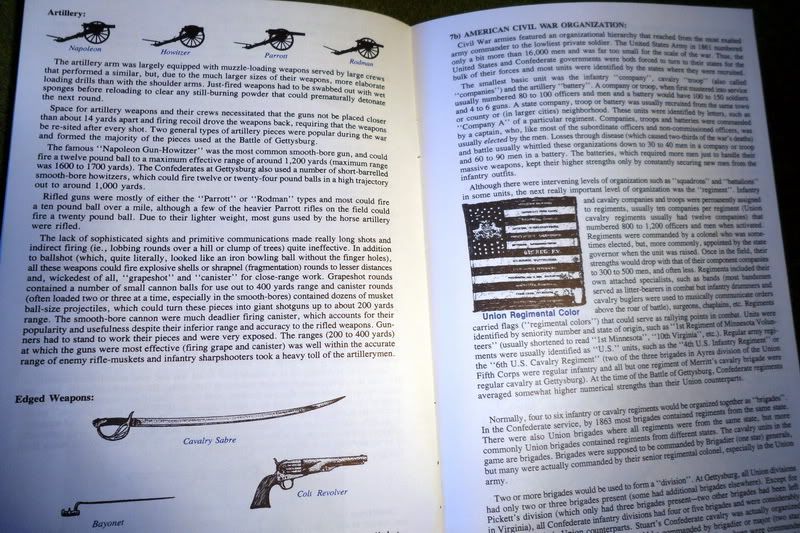

No comments:
Post a Comment